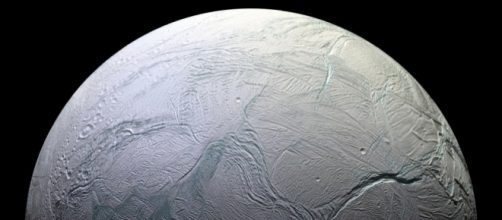Today, NASA announced that the Cassini spacecraft discovered that the vapor plumes ejected from Saturn's moon Encelados, have hydrogen, a key component for life. The announcement was made after absolute certainty was achieved that hydrogen is a major component in the vapor plumes in Encelados -- assuring the presence of oceans underneath the moon. The only thing needed to be examined is if these oceans do support life.
What is the chemical composition of Encelados' subterranean ocean?
According to the Cassini spacecraft, through its chemical tester, the vapor plumes ejected from Encelados are composed of 98 percent water, ammonia, carbon dioxide and methane.
With the hydrogen discovered, it now has all the necessary chemicals to support life. This discovery tells about the composition of the ocean underneath the icy surface of Encelados. Hydrogen is an important factor for life and now that the said chemical has been discovered in Encelados, the next thing to determine is if the hydrogen is present long enough in the moon for primitive life to develop. This can only be done through another batch of observations of the vapor plumes in said moon.
Where does the hydrogen in Encelados come from?
The hydrogen comes from a chemical reaction due to massive hydro-thermal vents underneath the oceans in Encelados. The chemical reaction is similar to Earth's hydro-thermal vents which are a major center of life underneath the world's oceans even without the power of the sun.
However, NASA hasn't discovered life in Saturn's moon, but the chemical composition of the subterranean ocean in Encelados make the presence of life a high possibility.
The next mission to the Saturn system is the Europa Clipper, complete with all manner of instruments which will determine the necessary chemicals needed for life. It has nine major instruments that will tell Astronomers much more. The clipper also has an ice penetrating radar, which will measure the thickness of the ice and how deep its oceans are.
Aside from Encelados, another likely place in the solar system that may harbor life-supporting oceans is Europa, which is one of the largest moons of Jupiter. This is NASA's target in the next stage of the expedition to these gas planets, especially now that the Cassini spacecraft mission will end with it crashing down into Saturn's atmosphere in September of this year.

